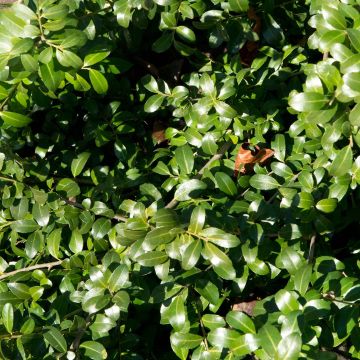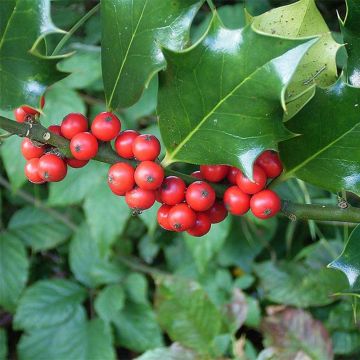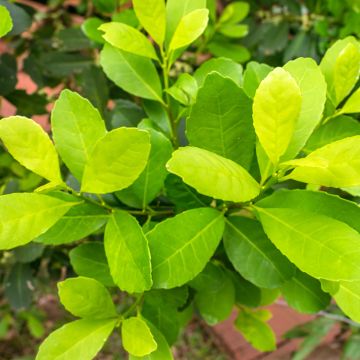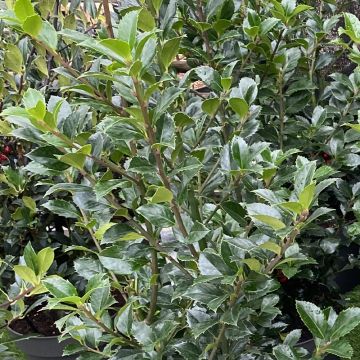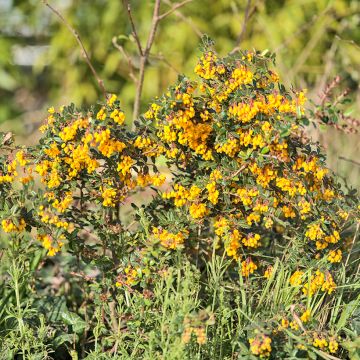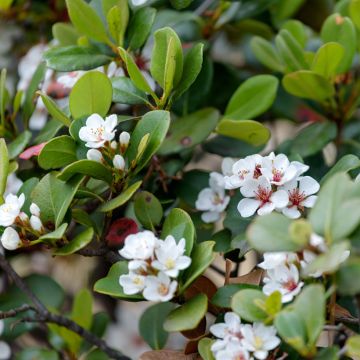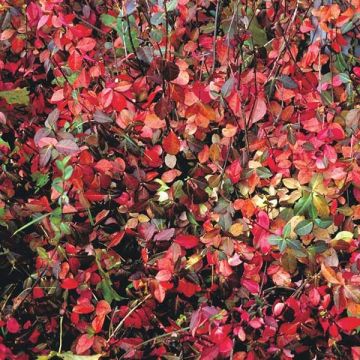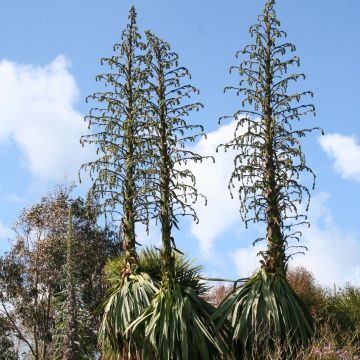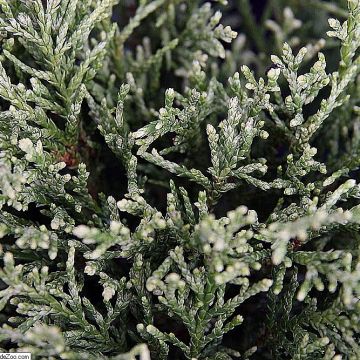

Ilex crenata Luxus Globe - Crenate Holly


Ilex crenata Luxus Globe - Crenate Holly


Ilex crenata Luxus Globe - Crenate Holly


Ilex crenata Luxus Globe - Crenate Holly
Ilex crenata Luxus Globe - Crenate Holly
Ilex crenata Luxus® Globe
Japanese Holly, Box-leaved Holly
Why not try an alternative variety in stock?
View all →This plant carries a 24 months recovery warranty
More information
We guarantee the quality of our plants for a full growing cycle, and will replace at our expense any plant that fails to recover under normal climatic and planting conditions.
From €5.90 for pickup delivery and €6.90 for home delivery
Express home delivery from €8.90.
Delivery to Corse prohibited: UE law prohibits the import of this plant from mainland France to Corse as part of the fight against Xylella fastidiosa. Please accept our sincere apologies.
More information
Does this plant fit my garden?
Set up your Plantfit profile →
Description
The Ilex crenata 'Luxus Globe' is a new variety of crenate holly with a naturally compact and rounded habit, resembling a miniature boxwood. This evergreen non-prickly bush bears small rounded leaves with a beautiful glossy green color, remaining persistent throughout winter. It is a male cultivar that does not produce berries. Very hardy and disease-resistant, it thrives in poor limestone soil, preferably moist, in full sun or partial shade. Perfect for borders or in a pot on the terrace, and great for topiary!
Crenate holly is a shrub native to Japan and belongs to the Aquifoliaceae family. The 'Luxus Globe' variety is a Dutch selection from 2017. It has a moderately fast growth rate, with a compact and rounded habit, reaching an average height of 60 cm with a spread of 50 cm. It is also characterised by its small, rugged, flat leaves of a relatively dark green colour, crenate, glossy, and non-prickly. All hollies are dioecious plants, meaning there are individuals with male flowers and female individuals. Only the female ones bear fruits. 'Luxus Globe' Japanese holly is a male cultivar that does not bear fruit.
With a faster growth rate than boxwood and malleable to everyone's whims, Ilex crenata 'Luxus Globe' will satisfy gardeners who appreciate well-maintained hedges and plant sculptures. It is perfect for low-monospecific hedges. 'Luxus Globe', with its beautiful ball shape, is well-suited for planting in pots before a house entrance or on the terrace. It will also be very interesting for borders or topiaries.
Hollies are both beloved plants and unknown plants. The genus includes nearly 800 deciduous or evergreen species, generally native to the temperate northern hemisphere. These very ancient plants have experienced the alternation of glacial, dry, and hot periods in our climatic history, making them highly adaptable and resistant plants. Their white to cream wood is very low in water, even when green. It is dense and heavy but soft and easy to work with in cabinetmaking. It is also an excellent fuel for heating, even when green. Finally, its foliage and berries (inedible) are rich in caffeine. A tea is prepared with its leaves in the Black Forest.
Report an error about the product description
Ilex crenata Luxus Globe - Crenate Holly in pictures




Plant habit
Flowering
Foliage
Botanical data
Ilex
crenata
Luxus® Globe
Aquifoliaceae
Japanese Holly, Box-leaved Holly
Cultivar or hybrid
Other Ilex - Holly
Planting and care
To plant the 'Luxus Globe' holly bush, make a generous addition of compost to the soil in your garden and incorporate it, in order to slightly acidify the soil while enriching it. If your soil is rich in active limestone, the holly bush will tend to develop chlorosis (the foliage gradually turns yellow around the leaf veins). Choose a partially shaded or shaded location in a warm climate. Follow the watering schedule (with non or low limestone water) for the first 3 years, especially during dry spells, to help the young plant establish itself. It will then manage on its own, as it tolerates drought quite well. The ilex can be attacked by holly leaf miners, white scale insects in spring, and mites and aphids in summer. Consider applying a preventive treatment at the beginning of the season. Ilex crenata prefers climates that combine cold winters and mild summers.
Planting period
Intended location
Care
This item has not been reviewed yet - be the first to leave a review about it.
Evergreen shrubs
Haven't found what you were looking for?
Hardiness is the lowest winter temperature a plant can endure without suffering serious damage or even dying. However, hardiness is affected by location (a sheltered area, such as a patio), protection (winter cover) and soil type (hardiness is improved by well-drained soil).

Photo Sharing Terms & Conditions
In order to encourage gardeners to interact and share their experiences, Promesse de fleurs offers various media enabling content to be uploaded onto its Site - in particular via the ‘Photo sharing’ module.
The User agrees to refrain from:
- Posting any content that is illegal, prejudicial, insulting, racist, inciteful to hatred, revisionist, contrary to public decency, that infringes on privacy or on the privacy rights of third parties, in particular the publicity rights of persons and goods, intellectual property rights, or the right to privacy.
- Submitting content on behalf of a third party;
- Impersonate the identity of a third party and/or publish any personal information about a third party;
In general, the User undertakes to refrain from any unethical behaviour.
All Content (in particular text, comments, files, images, photos, videos, creative works, etc.), which may be subject to property or intellectual property rights, image or other private rights, shall remain the property of the User, subject to the limited rights granted by the terms of the licence granted by Promesse de fleurs as stated below. Users are at liberty to publish or not to publish such Content on the Site, notably via the ‘Photo Sharing’ facility, and accept that this Content shall be made public and freely accessible, notably on the Internet.
Users further acknowledge, undertake to have ,and guarantee that they hold all necessary rights and permissions to publish such material on the Site, in particular with regard to the legislation in force pertaining to any privacy, property, intellectual property, image, or contractual rights, or rights of any other nature. By publishing such Content on the Site, Users acknowledge accepting full liability as publishers of the Content within the meaning of the law, and grant Promesse de fleurs, free of charge, an inclusive, worldwide licence for the said Content for the entire duration of its publication, including all reproduction, representation, up/downloading, displaying, performing, transmission, and storage rights.
Users also grant permission for their name to be linked to the Content and accept that this link may not always be made available.
By engaging in posting material, Users consent to their Content becoming automatically accessible on the Internet, in particular on other sites and/or blogs and/or web pages of the Promesse de fleurs site, including in particular social pages and the Promesse de fleurs catalogue.
Users may secure the removal of entrusted content free of charge by issuing a simple request via our contact form.
The flowering period indicated on our website applies to countries and regions located in USDA zone 8 (France, the United Kingdom, Ireland, the Netherlands, etc.)
It will vary according to where you live:
- In zones 9 to 10 (Italy, Spain, Greece, etc.), flowering will occur about 2 to 4 weeks earlier.
- In zones 6 to 7 (Germany, Poland, Slovenia, and lower mountainous regions), flowering will be delayed by 2 to 3 weeks.
- In zone 5 (Central Europe, Scandinavia), blooming will be delayed by 3 to 5 weeks.
In temperate climates, pruning of spring-flowering shrubs (forsythia, spireas, etc.) should be done just after flowering.
Pruning of summer-flowering shrubs (Indian Lilac, Perovskia, etc.) can be done in winter or spring.
In cold regions as well as with frost-sensitive plants, avoid pruning too early when severe frosts may still occur.
The planting period indicated on our website applies to countries and regions located in USDA zone 8 (France, United Kingdom, Ireland, Netherlands).
It will vary according to where you live:
- In Mediterranean zones (Marseille, Madrid, Milan, etc.), autumn and winter are the best planting periods.
- In continental zones (Strasbourg, Munich, Vienna, etc.), delay planting by 2 to 3 weeks in spring and bring it forward by 2 to 4 weeks in autumn.
- In mountainous regions (the Alps, Pyrenees, Carpathians, etc.), it is best to plant in late spring (May-June) or late summer (August-September).
The harvesting period indicated on our website applies to countries and regions in USDA zone 8 (France, England, Ireland, the Netherlands).
In colder areas (Scandinavia, Poland, Austria...) fruit and vegetable harvests are likely to be delayed by 3-4 weeks.
In warmer areas (Italy, Spain, Greece, etc.), harvesting will probably take place earlier, depending on weather conditions.
The sowing periods indicated on our website apply to countries and regions within USDA Zone 8 (France, UK, Ireland, Netherlands).
In colder areas (Scandinavia, Poland, Austria...), delay any outdoor sowing by 3-4 weeks, or sow under glass.
In warmer climes (Italy, Spain, Greece, etc.), bring outdoor sowing forward by a few weeks.

































